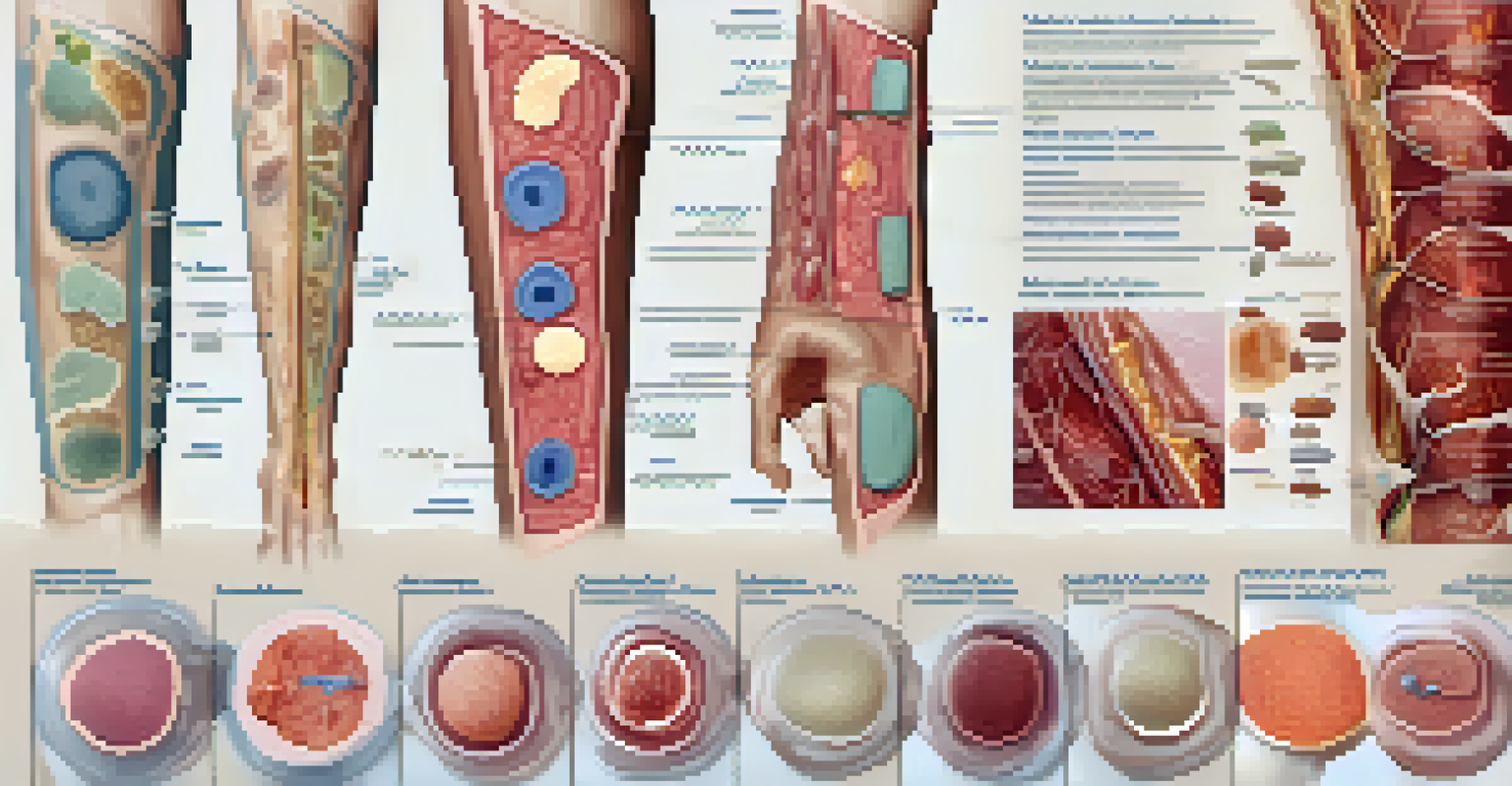Common Skin Infections: Causes, Symptoms, and Treatments

What Are Skin Infections and Why They Matter
Skin infections are conditions where harmful microorganisms invade the skin, leading to inflammation and irritation. They can range from mild irritations to severe conditions that may require medical intervention. Understanding these infections can help us recognize symptoms early, potentially preventing complications.
An ounce of prevention is worth a pound of cure.
The skin, being the body's largest organ, serves as a barrier against pathogens. However, cuts, abrasions, or even insect bites can compromise this barrier, allowing bacteria, fungi, or viruses to enter. This is crucial because, left untreated, skin infections can spread and lead to more serious health issues.
Additionally, skin infections are often contagious, meaning they can be easily transmitted between individuals. This makes awareness and education about prevention and treatment even more vital, especially in community settings. By staying informed, we can better protect ourselves and those around us.
Bacterial Skin Infections: Causes and Symptoms
Bacterial skin infections are among the most common types and are typically caused by bacteria such as Staphylococcus and Streptococcus. These bacteria can enter through cuts or abrasions, leading to infections like cellulitis or impetigo. Knowing how these infections occur helps in understanding how to prevent them.

Symptoms often include redness, swelling, warmth, and tenderness at the site of infection. In some cases, you might also notice pus or blisters forming. If you've ever had a painful bump that seemed to grow overnight, you may have experienced a bacterial infection firsthand.
Understanding Skin Infections
Recognizing the types, causes, and symptoms of skin infections is essential for early intervention and effective treatment.
Prompt treatment is essential to manage bacterial infections effectively. This often involves antibiotics to combat the bacteria, alongside proper wound care. Ignoring symptoms can lead to more severe complications, emphasizing the importance of seeking medical advice when needed.
Fungal Skin Infections: Recognizing the Signs
Fungal skin infections, such as athlete’s foot and ringworm, are caused by fungi that thrive in warm, moist environments. These infections can affect anyone, regardless of age or health status, making awareness key. Understanding the conditions that promote fungal growth can help in prevention.
The greatest wealth is health.
Common symptoms include itching, redness, and flaky skin, often accompanied by a distinct odor. For instance, athlete’s foot typically presents as itchy, peeling skin between the toes. If you’ve ever dealt with a persistent rash that just wouldn’t go away, it might have been a fungal infection.
Treating fungal infections typically involves antifungal creams or medications, which can effectively eliminate the fungus. However, maintaining good hygiene and keeping your skin dry are crucial in preventing future infections. Remember, a little prevention goes a long way!
Viral Skin Infections: What You Should Know
Viral skin infections, such as herpes simplex and warts, are caused by viruses that can spread easily through direct contact. These infections often manifest in specific areas and can be quite uncomfortable. Understanding how these viruses operate can help in managing outbreaks and preventing transmission.
Symptoms vary but can include painful blisters, itching, and sometimes fever or malaise. For example, the herpes simplex virus can cause painful sores on the mouth or genitals, while warts appear as raised bumps on the skin. Recognizing these symptoms can lead to quicker treatment and relief.
Prevention is Key
Simple preventive measures, like maintaining good hygiene and promptly caring for cuts, can significantly reduce the risk of skin infections.
Treatment for viral infections often focuses on managing symptoms, as antibiotics will not be effective. Antiviral medications can help reduce the severity and duration of outbreaks. Being proactive about treatment and practicing good hygiene can significantly reduce the risk of spreading viral infections.
Preventing Skin Infections: Simple Steps to Follow
Preventing skin infections is often easier than treating them. Simple measures like keeping your skin clean and dry, avoiding sharing personal items, and wearing protective clothing can make a big difference. Regular handwashing is also a powerful tool in reducing the spread of bacteria and viruses.
Additionally, if you have cuts or abrasions, it's essential to care for them properly by cleaning and covering them. This not only prevents infections but also promotes faster healing. Think of your skin as a fortress; the more fortified it is, the less likely invaders can breach it.
Lastly, staying aware of your surroundings and avoiding known sources of infection, like public swimming pools, can further reduce your risk. Prevention is always better than cure, so adopting these habits can help keep your skin healthy and infection-free.
When to Seek Medical Attention for Skin Infections
While many skin infections can be treated at home, knowing when to seek medical attention is crucial. If you notice increasing redness, swelling, or pain around an area of skin, it’s time to consult a healthcare professional. Ignoring these warning signs can lead to complications.
Other red flags include fever, chills, or if the infection spreads rapidly. For example, cellulitis can escalate quickly if not treated promptly. If you ever feel uncertain about a skin condition, it’s always better to err on the side of caution and get it checked out.
When to Seek Medical Help
Knowing when to consult a healthcare professional can prevent complications from skin infections and ensure timely treatment.
Remember, early intervention can make a significant difference in recovery time and overall health. A healthcare provider can offer the right advice and treatment options tailored to your specific situation. Trust your instincts; if something feels off, don’t hesitate to reach out for help.
Conclusion: Staying Informed and Healthy
In summary, understanding common skin infections—along with their causes, symptoms, and treatments—empowers us to take better care of our skin. With knowledge comes the ability to recognize issues early, which is vital for effective treatment. The skin is our first line of defense, so keeping it healthy is paramount.
By adopting preventive measures and being proactive about seeking medical help when needed, we can significantly reduce the risks associated with skin infections. Remember that even minor irritations can escalate if ignored, so it’s important to stay vigilant.

Ultimately, staying informed, practicing good hygiene, and prioritizing skin health are essential steps to enjoy clear and healthy skin. Your skin deserves the best care, and understanding these infections is a big part of that journey.